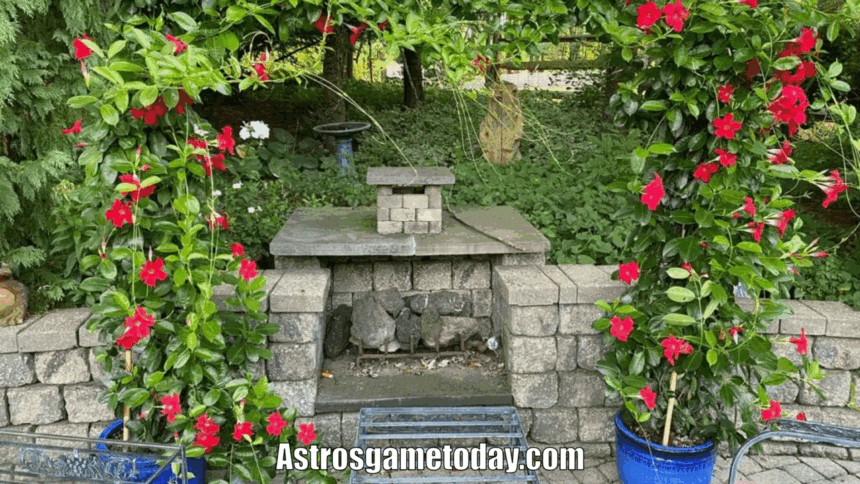Mandevilla is a stunning flowering vine that has captured the hearts of gardeners and plant enthusiasts around the world. Known for its vibrant blooms and lush foliage, mandevilla brings a tropical touch to any landscape, making it a popular choice for both residential and commercial gardens. In this article, we’ll explore the many facets of mandevilla, including its varieties, growing conditions, care tips, and creative uses in garden design.
What is Mandevilla?
Mandevilla is a genus of flowering plants native to Central and South America. The plant is part of the Apocynaceae family and is characterized by its large, trumpet-shaped flowers that can range in color from white to pink to deep red. With its climbing ability and vigorous growth, mandevilla can reach heights of up to 10 feet or more, making it an excellent choice for trellises, arbors, and fences.
Varieties of Mandevilla
There are several species and cultivars of mandevillas, each offering unique features. Some of the most popular varieties include:
- Mandevilla sanderi: Often referred to as Brazilian jasmine, this variety showcases striking pink flowers with a yellow throat. It is one of the most common types found in gardens.
- Mandevilla boliviensis: Known for its stunning white blooms, this variety has a slightly more delicate appearance and is ideal for those looking for a softer touch in their garden.
- Mandevilla laxa: Also known as Chilean jasmine, this variety produces fragrant white flowers that attract pollinators, making it a favorite among gardeners looking to create a wildlife-friendly space.
- Mandevilla ‘Sun Parasol’: A popular hybrid, this cultivar offers a wide range of colors and is bred for enhanced vigor and disease resistance. It’s perfect for gardeners who want a reliable, easy-to-grow option.
Each variety of mandevillas has its unique charm, allowing gardeners to choose the perfect plant to suit their aesthetic preferences.
Ideal Growing Conditions for Mandevilla
Mandevilla thrives in warm, sunny environments, making it a perfect candidate for gardens in USDA hardiness zones 9 to 11. However, it can also be grown as an annual in cooler climates. Here are some key factors to consider when planting mandevilla:
Light Requirements
Mandevilla requires full sun to thrive. Ideally, the plant should receive at least six hours of direct sunlight each day. If grown in partial shade, the plant may still survive, but it will produce fewer flowers and exhibit slower growth.
Soil Preferences
Mandevilla prefers well-draining soil rich in organic matter. A pH level between 6.0 and 7.0 is ideal for optimal growth. To improve soil drainage, consider adding compost or perlite to the planting mix.
Watering Needs
While mandevilla enjoys moisture, it’s important not to overwater. Allow the top inch of soil to dry out between waterings. During the growing season, usually from spring to fall, the plant may require more frequent watering. In winter, reduce watering to avoid root rot.
Fertilization
Feeding mandevillas regularly can promote lush growth and abundant blooms. Use a balanced, water-soluble fertilizer every four to six weeks during the growing season. A fertilizer high in phosphorus can encourage more flowering.
Caring for Mandevilla
Taking care of mandevilla is relatively straightforward, but there are some essential tips to ensure the plant thrives.
Pruning
Pruning is an important aspect of mandevilla care. This not only helps maintain its shape but also encourages more blooms. The best time to prune is in early spring before new growth begins. Remove any dead or damaged stems and cut back overgrown areas to promote a bushier appearance.
Pests and Diseases
Mandevilla can be susceptible to pests such as aphids, spider mites, and whiteflies. Regularly inspecting the plant for signs of infestation is crucial. If you notice pests, treat them promptly with insecticidal soap or neem oil.
Common diseases affecting mandevillas include powdery mildew and root rot. Ensuring proper air circulation and avoiding overwatering can help prevent these issues.
Winter Care
In colder regions, mandevilla is best treated as an annual, but if you want to keep it as a perennial, consider bringing it indoors during winter. Before bringing it inside, inspect the plant for pests and diseases. Place it in a sunny spot indoors and reduce watering during its dormant period.
Creative Uses for Mandevilla in Your Garden
Mandevilla is not just a beautiful plant; it’s also incredibly versatile. Here are some creative ways to incorporate mandevilla into your garden design:
Climbing Trellises and Arbors
One of the most common uses for Mandevilla is as a climbing plant on trellises and arbors. Its vigorous growth and stunning blooms create a dramatic focal point in any garden. Consider training the plant to climb along a wooden or metal structure for added visual interest.
Container Gardening
Mandevilla can also be grown in containers, making it a great option for patios and balconies. Choose a large pot with good drainage and use a quality potting mix. This allows you to move the plant around as needed to ensure it receives adequate sunlight.
Vertical Gardens
For those with limited space, a mandevilla can be an excellent choice for vertical gardening. Plant it in a vertical planter or wall-mounted container to create a living wall adorned with vibrant flowers.
Mixed Borders
Incorporate mandevilla into mixed borders with other flowering plants and shrubs. The contrast of its lush green foliage against other colors and textures can create a dynamic and visually appealing landscape.
Seasonal Displays
Mandevilla’s long blooming period makes it a fantastic addition to seasonal displays. Use it as a centerpiece in summer arrangements or combine it with other annuals for a burst of color.
Conclusion
Mandevilla is a captivating plant that brings a touch of the tropics to gardens everywhere. Its stunning flowers, vigorous growth, and versatility make it a favorite among gardeners. By understanding its ideal growing conditions and care requirements, you can successfully cultivate this beautiful vine in your own outdoor space.
Whether you’re looking to add vertical interest to your garden, create a vibrant container display, or simply enjoy the beauty of its blooms, mandevilla is an excellent choice. With the right care and attention, your mandevilla can thrive and become a stunning focal point in your landscape for years to come.
Embrace the charm of mandevilla and transform your garden into a vibrant oasis filled with color and life!
May Also Read: Showbizztoday.com: A Leading Source for Entertainment and Celebrity News



